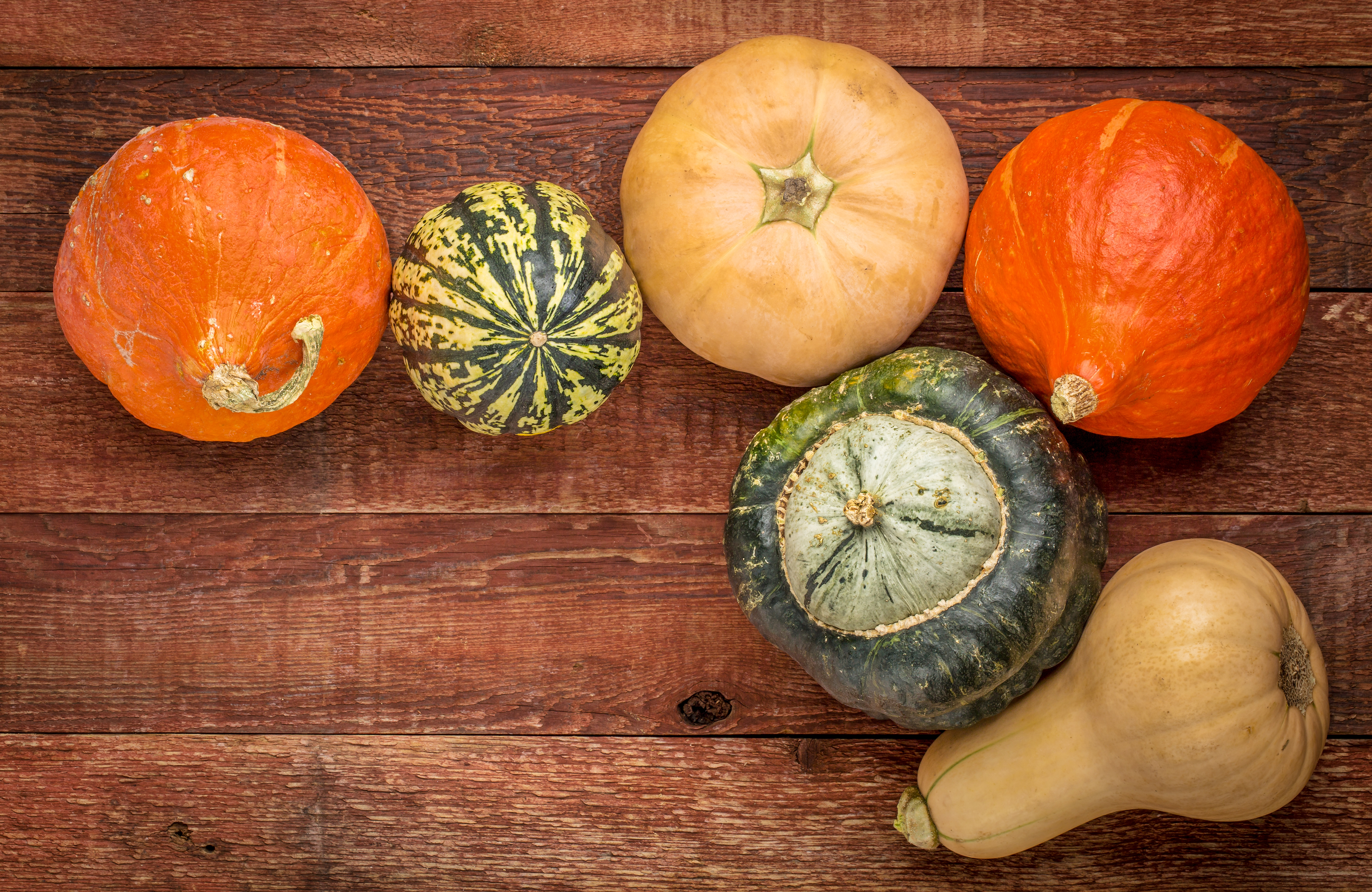Delicata, acorn, butternut, spaghetti — winter squash is abundant in Tennessee, but with so many kinds to choose from, where do you start?
Here’s what you need to know about winter squash in Tennessee.
What is winter squash?
An annual fruit, winter squash differs from its summer counterpart because it’s harvested and eaten when the fruit is fully mature, which means:
- The seeds inside are fully grown (and could grow if planted), and
- The skin has hardened into a tough rind.
Summer squash, such as zucchini, tastes best when harvested young. They have immature seeds and a softer, edible rind.
Winter squash tastes best when harvested full-grown. You know it’s ready when the fruit turns a deep, mostly solid color and the skin is hard. A winter squash should feel heavy; that means it hasn’t dried out. Store it in a cool, dry place, but don’t refrigerate it.
Some varieties of winter squash can last several months if stored properly.
How do you cook winter squash?
Winter squash generally needs to be cooked (baked, roasted, grilled, etc.) before being eaten. Often the skin must be removed, though some squashes (such as the aptly named delicata) have delicate, edible rinds.
What is the nutritional value of winter squash?
Winter squash is low in calories and high in complex carbohydrates and fiber.
It is also an excellent source of:
- Vitamin A (antioxidants)
- Vitamin B (energy, metabolism)
- Vitamin C (vision, heart health, iron absorption)
- Iron (blood and muscle function)
- Potassium (heart health, lowering stress)
- Beta-carotene (healthy skin, vision)
Beta-carotene tip: The darker the skin, the higher the beta-carotene content.
What are the different kinds of winter squash?
 Acorn
Acorn
- Appearance: dark green outside, often with a spot of orange somewhere; yellow-orange flesh
- Taste: sweet, nutty
- Use: baked, sautéed, steamed or stuffed with rice or meat; particularly good in soup; tough but edible rind
 Ambercup
Ambercup
- Appearance: small, pumpkin-like with orange skin and flesh; similar to acorn and buttercup squashes
- Taste: sweet, mild, dry, not stringy
- Use: peel, cube and roast; anywhere you would use sweet potatoes, use ambercup

Buttercup
- Appearance: turban shape with flatter top; dark green skin; dense, yellow-orange flesh
- Taste: mild, dense, slightly sweet
- Use: due to its density, best cubed and cooked into stews, or roasted until tender
 Butternut
Butternut
- Appearance: beige; shaped like an elongated bell; dark orange flesh
- Taste: similar taste to sweet potatoes but milder with a sweet, nutty flavor
- Use: the same way you would sweet potatoes — roasted, sautéed, etc. — or puree in soup as it won’t get stringy
 Delicata
Delicata
- Appearance: long, thick; yellow skin with smaller green stripes
- Taste: creamy, slightly sweet; tender, edible rind
- Use: all the ways listed above but also raw, shaved thin on salads, pasta or pizza
Delicata was originally introduced in New York in 1894 and was popular through the 20’s; Because of its delicate nature, it fell into obscurity for 75 years until its recent resurgence as an heirloom squash.

Spaghetti
- Appearance: watermelon-shaped; light yellow/tan in color
- Taste: mild, earthy, slightly sweet
- Use: roast and scrape the flesh out to create “noodles” that can be eaten like pasta
Contrary to how most fruit ages, larger spaghetti squash are more flavorful than small ones.

Sweet dumpling
- Appearance: looks like a miniature pumpkin; beige and green rind; orange flesh
- Taste: tender, light, slightly sweet
- Use: cut in half, drizzle with honey or oil and roast; or roast, scoop out flesh and stuff with vegetables, meat or rice
For more ways to use squash, click here.
Get more information about specific health terms, topics and conditions to better manage your health on bcbst.com. BlueCross BlueShield of Tennessee members can access wellness-related discounts on fitness products, gym memberships, healthy eating and more through Blue365®. BCBST members can also find tools and resources to help improve health and well-being by logging into BlueAccess and going to the Managing Your Health tab.






WellTuned provides inspiration and practical advice for healthy living.
WellTuned does not offer medical advice. Any personal health questions should be addressed to your doctor.